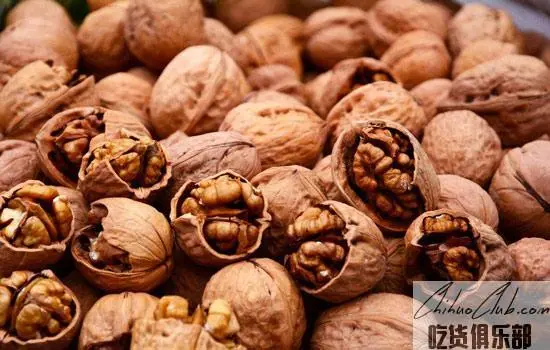
Hetaojing Walnut
-
Update date::
-
Date of protection::
-
Protected range:The origin of walnut and walnut is the administrative area of the Bozhou District of Zunyi City, Guizhou Province.
-
Related origin:guizhou zunyishi zunyixian zunyishi-bonanjiedao zunyishi-fengxiangzhen zunyishi-goujiangzhen zunyishi-guihuaqiaojiedao zunyishi-hongguanmiaozuxiang zunyishi-leshanzhen zunyishi-longkengjiedao zunyishi-longpingzhen zunyishi-maolizhen zunyishi-matizhen zunyishi-nanbaijiedao zunyishi-panshuizhen zunyishi-pingzhengyilaozuxiang zunyishi-sanchazhen zunyishi-sanhezhen zunyishi-shangjizhen zunyishi-shibanzhen zunyishi-tiechangzhen zunyishi-tuanxizhen zunyishi-wujiangzhen zunyishi-xinminzhen zunyishi-xipingzhen zunyishi-yaxizhen zunyishi-yingshanhujiedao
-
Category:
Walnut carp has a long history of planting walnuts. It has been cultivated and operated for more than 300 years. Due to the special influence of geography and microclimate, the walnuts produced locally are of unique quality and are famous for their tribute. There are more than 200 hundred-year-old walnut trees in the area, and there are several thousand old walnut trees.
[Historical allusions] Walnuts, once called "walnuts" or "peach peaches." The origin is West Asia, southern Europe. When Emperor Wu of the Han Dynasty, the ambassador Zhang Yi was sent to the Western Region, and after returning to China, he introduced walnuts to China. Jinhua Zhang Hua’s "Body Records" contains: "Zhang Yu made the Western Regions still, and got the walnuts, so the name of the walnuts." Li Shizhen's "Compendium of Materia Medica" in the Ming Dynasty also has the following statement: "Walnut, this fruit is out of the Hu. Hanshi Zhang Wei made the Western Regions replanted, and the Qinzhong, and gradually spread to the East." According to legend, in 319 AD, the general Hu Ren Shile occupied the Central Plains, after the establishment of Zhao, because of the taboo "Hu" changed to "walnut" as "walnut" , according to the present. [Eating method] 1. Walnut can be eaten raw, cooked food, or used as medicated porridge, fried soup, etc. 2. Mix walnut and black sesame seeds and mix them to increase sebum secretion, improve skin elasticity, keep skin delicate and delay aging. And quickly replenish the physical strength; 3. Some people like to peel off the brown skin on the surface of the walnut kernel, which will lose some of the nutrients, so do not peel off this thin layer of skin. [Note] Walnut is the king of antioxidants. Walnuts contain arginine, oleic acid, antioxidants, etc. to protect the cardiovascular, prevent coronary heart disease, stroke, senile dementia, etc., but do not eat too much at a time, otherwise it will affect digestion. Some people like to peel off the brown skin on the surface of the walnut, which will lose some nutrients, so don't peel off the skin. [Options] The walnut is round and round, the shell is thin and white, the kernel rate is high, dry, the peach kernel is large, the color is white, and the oil content is high. The color of Renyi is dark and yellow, and the brownish yellow is more subtle. The taste of Hara has been seriously deteriorated and cannot be eaten. [Zhu Ke food] Walnut can not be eaten with pheasant meat, pneumonia, bronchiectasis and other patients should not eat. [Recommended recipes] walnut kernel stewed silkworm cocoons, walnut rice porridge, yellow wine walnut soup, candied fruit, walnuts and five flavored honey paste.
Technical requirements for the quality of walnut eucalyptus walnuts 1. Variety suitable for the cultivation of large foam walnuts, fragrant walnuts and other fine varieties. Second, the site conditions range from 800m to 1600m above sea level, the soil type is mountain yellow brown soil, yellow soil purple soil, lime soil, organic matter content ≥1.0%, pH value 5.5 to 7.5, soil layer thickness ≥40cm. Third, cultivation management 1. Breeding: using local fine varieties of seedlings as rootstocks, grafting and breeding. 2. 3. Fertilization: After harvesting in autumn, combined with soil, the base fertilizer is applied, and the organic fertilizer per plant is ≥20kg. 4. Plastic trimming: combines the trimming of the growing season with the trimming of the dormant period to ensure the ventilation and light transmission of the tree. 5. Harvest: The green fruit turns from green to yellow-green, and the fruit peel of 2/3 or more is naturally cracked or peeled off and harvested. 6. Environmental and safety requirements: The use of pesticides, fertilizers, etc. must comply with relevant national regulations and must not pollute the environment. 4. Processing 1. De-skinning: Stacking in a cool place or in a ventilated room. The thickness of the stack is ≤ 50cm. When the green skin is inflated or cracked, the knocking causes the cracks to break out. 2. Cleaning: Wash the walnuts in time to remove the impurities. 3. Drying: drying or drying until the nut moisture content is ≤8.0%, and the drying temperature is 35°C to 45°C. 4. Storage: Choose a cool, dry, ventilated, backlit environment. V. Quality Features 1. Sensory characteristics: The shell of the nut is nearly round or oval, the stitching is tight, narrow and convex, yellowish white or light amber; the nuts are full, light white or light yellow, and the taste is pure and easy. Take the whole kernel. 2. Physical and chemical indicators: transverse diameter ≥ 30.0mm, kernel yield ≥ 50.0%, fat content ≥ 55.0%, protein content ≥ 15.0%. 3. Safety and other quality technical requirements: Product safety and other quality technical requirements must comply with relevant national regulations
Apply to:
Producers within the scope of the production of walnuts and walnuts may apply to the Zunyi City Bozhou District Market Supervision Administration for the use of the “Special Marks for Geographical Indication Products”, which shall be reviewed by the Guizhou Provincial Bureau of Quality and Technical Supervision and reported to the General Administration of Quality Supervision, Inspection and Quarantine for approval. The testing mechanism of walnut and walnut is selected by the Guizhou Provincial Bureau of Quality and Technical Supervision in the testing institutions that meet the qualification requirements.